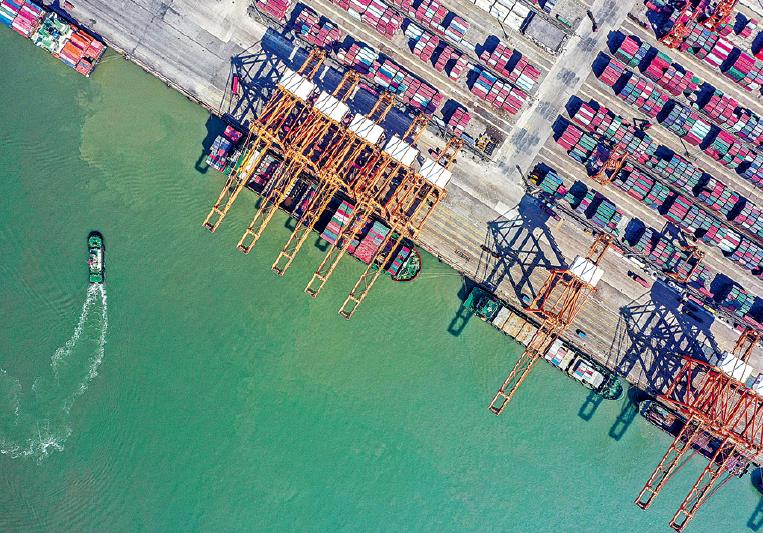China, ASEAN set to boost RCEP trade as new chapter begins

An aerial view of the container wharf of Qinzhou Port in South China's Guangxi Zhuang autonomous region. [Photo/Xinhua]
NANNING-The HF Spirit, a freighter sailing from Jakarta, capital of Indonesia, arrived at the Qinzhou Port in South China's Guangxi Zhuang autonomous region on Nov 20, bringing five reefer containers filled with fresh fruit.
"Indonesia's bananas, mangosteens, Thailand's coconuts, longan, durians and Vietnam's pitaya are the 'frequenters' on our ship," said Lu Xiaoshan, manager of the shipping department of the New Sitc International Shipping Agency (Shanghai) Co Ltd's branch in Qinzhou.
In recent years, the company has constantly added new routes to member states of the Association of Southeast Asian Nations-ASEAN-thanks to robust China-ASEAN trade, Lu said.
This year marks the 30th anniversary of the establishment of dialogue and relations between China and ASEAN. Over the past three decades, trade between China and ASEAN has skyrocketed by 85 times. Last year, China remained ASEAN's largest trading partner for 12 consecutive years, while ASEAN became China's largest trading partner.
Since the implementation of the China-ASEAN Free Trade Agreement-CAFTA-in 2010, the trade in goods and services between China and ASEAN has grown rapidly through the deep integration of industrial and value chains. Tariffs on 7,000 products have been scrapped under the CAFTA framework.
China and ASEAN recently announced the establishment of a comprehensive strategic partnership-a new milestone in the history of China-ASEAN relations-to contribute further to the building of an open, inclusive and sustainable region that enjoys peace, security, prosperity and sustainable development.
Wang Zhengbo, chief executive officer of Guangxi TWT Supply Chain Management Co Ltd, is busy exploring new business opportunities recently by importing Cambodian tapioca, mango, rice and other agricultural products to China.
Wang said that Cambodia's produce has advantages in quality and price. "The deepening of bilateral cooperation has made cross-border business much more convenient. Moreover, after learning that the Regional Comprehensive Economic Partnership-RCEP-agreement will soon take effect, two banks have proposed to provide financial support for our new business," said Wang, adding the newly harvested Cambodian tapioca chips will soon depart for China.
Initiated by the 10 ASEAN countries to establish a unified market by reducing tariffs and non-tariff barriers, the RCEP will take effect on Jan 1, 2022, and more than 90 percent of merchandise trade in the region will be eventually subject to zero tariffs.
The RCEP includes 10 ASEAN member states, China, Japan, the Republic of Korea, Australia and New Zealand. The 15 states' total population, gross domestic product and trade all account for about 30 percent of the world total.
Do Nam Trung, consul general of Vietnam in Nanning, said that the signing of the RCEP will greatly boost the development of economic globalization, and usher in a new era of economic and trade exchanges between ASEAN and China.
The RCEP is especially useful in reducing and removing trade obstacles, creating the world's largest common market, where goods and services could be more freely traded, thus accelerating the regional and world economic revivals, noted Oh Ei Sun, a senior fellow at the Singapore Institute of International Affairs.
"The China-ASEAN relationship has developed into the most successful and dynamic model of cooperation in the Asia-Pacific region," said Zhai Kun, a professor with the School of International Studies at Peking University.
"The upgrading of China-ASEAN bilateral relations will offer more cooperation options for regional and global governance, and to a large extent drive the progress of the RCEP," Zhai said.
























